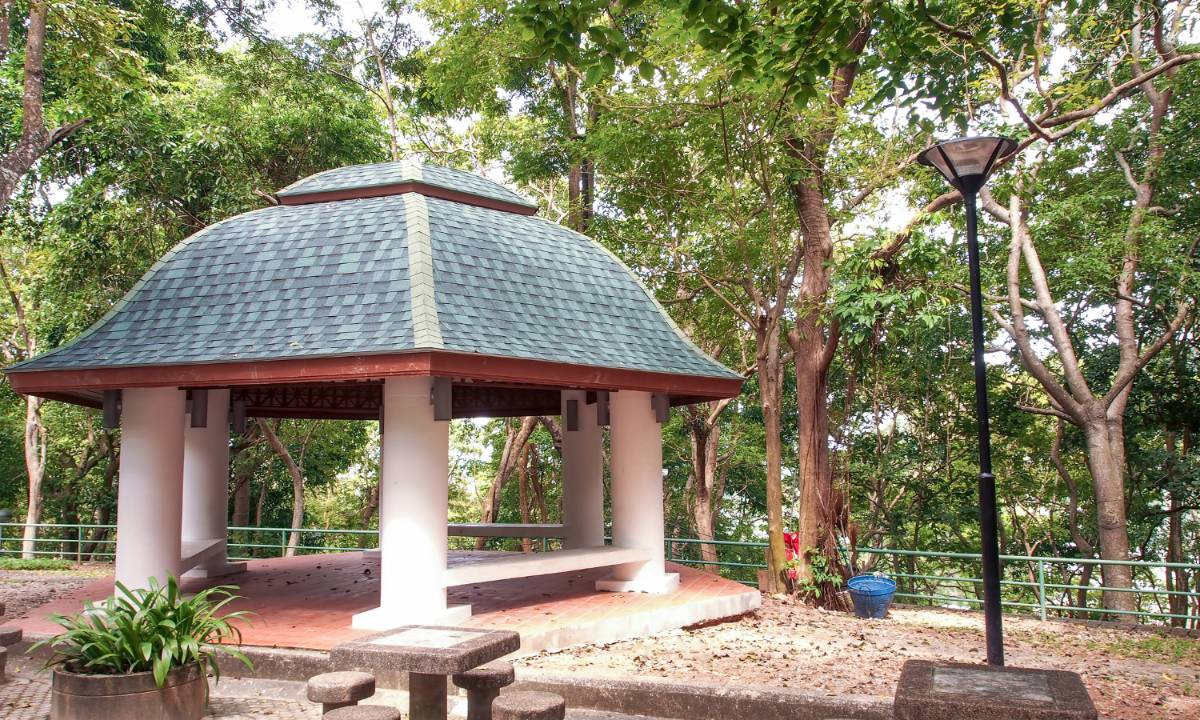Introduction
A pavilion is a structure, a place, or a building like Gazebos built to shelter people or animals. A pavilion typically has a single open side with no walls for functions like dancing, entertainment, and sports events. The term derives from the Middle French word “Pavillon,” which means “small palace.”
What is a Pavilion?
A pavilion is a versatile architectural gem. It beckons visitors with open arms, offering a space for leisure and shelter. Pavilions, whether temporary or permanent, come in myriad forms. They cater to diverse purposes, seamlessly integrating into various settings. These enchanting structures are often nestled within lush gardens. They dot pleasure grounds or integrate into grander edifices.
Moreover, pavilions embody adaptability. They transform gracefully to host an array of functions. These range from serene relaxation to hosting special events. Their designs are a symphony of architectural variations. They range from ethereal tent pavilions for festivities to robust forms. These substantial forms stand the test of time. Pavilions stand as solitary sentinels, resplendent in gardens. Alternatively, they can be humbly nestled within larger architectural tapestries.
Additionally, the heart of pavilions beats with an aura of relaxation. They beckon all to partake in moments of enjoyment. Pavilions foster social gatherings and are crafted from materials as diverse as wood or metal. These open structures offer a temporary respite. They provide seating, dining, or act as integral components of grander architectural narratives.
Basic History of Pavilions
The history of pavilions is fascinating, covering both architecture and culture. The term “pavilion” comes from the Latin “papilio,” meaning “butterfly.” Over time, it has become a symbol of architectural elegance. These structures have played various roles. They’ve been ornate palaces and exhibition spaces. Pavilions have been built as standalone structures. They’ve also been part of larger buildings. Their functions vary from secondary buildings to special event venues.
Pavilions hold cultural significance too. They are often symbolic statements at world fairs and cultural exhibitions. They represent architectural skill and cultural identity. The term “pavilion” is known worldwide. It has influenced regions like the Eastern U.S. colonies, New England, and the Deep South.
Pavilions have a rich history. They date back to ancient Egyptian royal shelters. Today, they include modern marvels like India’s Neemrana Fort Palace. These structures have adapted through time and purpose. They’ve become diverse in form. This includes grand indoor pools and temporary festival tents. Yet, they’ve maintained their timeless charm.

Modern Usages of Pavilions
Pavilions today serve a multitude of contemporary purposes. They seamlessly blend form and function. In the great outdoors, they transform into vibrant entertainment hubs. They offer shelter for gatherings, dining, and relaxation. This is often by inviting fireplaces or cozy seating. These architectural gems also contribute to urban landscapes. They add a touch of elegance and style.
Innovative designs and materials are key. Modern pavilions become focal points in landscaping. They enhance aesthetics and appeal. But they’re not limited to leisure. Pavilions offer versatile spaces for work and study. They foster creativity and concentration in the tranquility of nature. Furthermore, some pavilions are now vibrant hubs for art and culture. They host site-specific events. They reflect the latest architectural and artistic trends. All the while, they seamlessly blend into urban surroundings.
In urban planning, contemporary pavilions find their place in communal spaces. They add vibrancy and serve as shelters for community activities. These adaptable structures bridge the gap between private and public spaces. They offer limitless possibilities. Simple pavilions can easily become more permanent. They can have insulation and waterproofing to create versatile exhibition spaces.
For inspiration, consider the Expo Pavilion in Milan. It creatively used nature and recycled materials. Materials like stones from Lake Como, wood from storm-felled trees, and metal from old Expo 2015 gates. This demonstrates the endless potential of these architectural wonders.
How to Build a Pavilion?
Creating your very own pavilion is an exciting endeavor. It combines practicality with personal style. Follow these steps to build a pavilion tailored to your needs:
- Planning and Design: Start by envisioning the pavilion’s size, style, and purpose. Consider essential elements like support posts and roof design. Also, think about extras such as benches or lighting. For inspiration, utilize online plans.
- Selecting Materials: Choose construction materials wisely. Your climate and budget are important factors. Wood, metal, and vinyl are common options. Each has its advantages.
- Foundation: Begin by digging holes for the support posts. Ensure they are level and secure. Then, fortify them with poured concrete for stability.
- Framing: Assemble the framework using your chosen materials. Follow detailed construction plans closely. Ensure precision in this step. It forms the pavilion’s core structure.
- Roofing: Craft a sturdy roof structure with rafters. Use waterproof, weather-resistant materials. This is vital for withstanding the elements.
- Finishing Touches: Add your personal touch with features like benches and lighting. These elements enhance the aesthetics and functionality of your pavilion.
- Maintenance: Establish a regular maintenance routine to preserve your pavilion’s longevity. Protection is key to keeping your structure in top-notch condition.
Remember to consult local building codes. Ensure your pavilion complies with them. In essence, a pavilion offers shelter and versatility. It can serve as a dwelling, workspace, or a shaded retreat from the sun.
Related: 33 Creative Backyard And Outdoor Gazebo Ideas
Pros and Cons of Different Types of Materials in Building Pavilions
In the construction of pavilions, material choice is crucial. It significantly affects the outcome. Let’s explore the pros and cons of different materials:
Wood:
- Naturally warm and rustic.
- Customizable and affordable.
- Needs regular maintenance.
- Prone to rot, insects, and weather damage.
Vinyl:
- Requires low maintenance.
- Resistant to rot and insects.
- Durable and wood-like.
- Limited in customization.
- May clash with traditional styles.
Metal:
- Extremely durable and low maintenance.
- Resists pests effectively.
- Can become hot in sunlight.
- Lacks a natural appearance.
- Noise issue during rain.
Concrete:
- Very durable with a modern look.
- Needs minimal maintenance.
- Lacks wood’s warmth and naturalness.
- Can be expensive.
Asphalt Shingles:
- Affordable, matches existing roofs.
- Durable yet shorter lifespan.
Moreover, wood is sustainable and eco-friendly. It’s both renewable and biodegradable. When choosing materials, consider your budget, aesthetics, maintenance needs, and local climate. Metal stands out in durability but is expensive. Wood, while budget-friendly, needs more upkeep. Vinyl is versatile but might need earlier replacement. Each material has unique pros and cons. Choose wisely based on your needs and preferences.

Where to Install a Pavilion?
Choosing the perfect spot for your pavilion is crucial. I have valuable tips to make this easy:
- Start by selecting a location. It should complement your outdoor space and meet your needs. Consider the view, how close it is to your home, and accessibility.
- Ensure the pavilion is on a level surface. This is vital for stability and easy installation. Concrete slabs or post footings are good choices, depending on local codes.
- Preferably, choose a shady area. This will create a more comfortable space for relaxation and activities.
- Also, think about aesthetics. A well-placed pavilion enhances your property’s appearance. It should blend seamlessly with your landscaping.
- Following the installation guidelines from your pavilion kit manufacturer is smart. Their step-by-step instructions will simplify the process.
By considering these factors and adhering to the manufacturer’s advice, you’ll find the perfect spot for your pavilion. It will offer both functionality and aesthetic appeal to your outdoor area. Whether in your garden, on your patio, or at a local park, a pavilion is versatile and beautiful. It can complement any landscaping style or theme. So, be creative and let your pavilion be a standout feature.
You Can Build your Pavilion
Building your own pavilion is a rewarding DIY endeavor. It can transform your outdoor space significantly. Here are the essential steps and considerations for your guidance:
- Planning: First, envision your pavilion. Determine its size, style, and location. Ensure it complements your outdoor area.
- Materials: Start by gathering the required materials. These include wood, screws, and roofing. Consider optional features like benches or tables.
- Foundation: Create a stable foundation next. Choose between a concrete slab or pavers. Your choice depends on preferences and pavilion size.
- Frame Construction: Craft the pavilion’s frame. Use the chosen wood and follow your design. Ensure the structure is sturdy and level.
- Roofing: Add weatherproof roofing to protect your pavilion. You can use materials like shingles or metal.
- Finishing Touches: Personalize your pavilion. Add extras like benches, lighting, or decorative elements. This adds a unique touch.
- Maintenance: Ensure your pavilion’s longevity. Conduct regular inspections and cleanings. Reseal or repaint as necessary.
Building a pavilion can be a small, straightforward project for personal use. Alternatively, it can be larger and more complex for broader use. This could be for a neighborhood, city, state, or country. Always remember to consult local building codes. Adhere to regulations for compliance and safety. So, take a deep breath. Unleash your creativity. Watch your outdoor space transform into a haven for various activities.
Related: The Ultimate Guide To Pergola And How To Install It
Conclusion
This is an excellent opportunity to build your pavilion and enjoy the fun with family and friends. Please contact us via email if you have questions about building a pavilion. We are here to help you have the best time in your life by providing advice on how to build one yourself.

